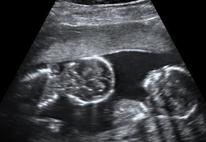 | ||||
Identical Twins
Why They Aren't Really Identical
from Science Prof Online
/I
Identical twins may appear and act so similar that their own relatives have trouble telling them apart. Even DNA fingerprints are not helpful in identifying an individual twin.
Even so, no two humans are exactly alike in either anatomy or physiology. This is true even for identical twins that that share the exact same DNA code.
Biometric programs have been developed that can detect extremely small facial differences such as freckle placement, or pore location. Twins have also been reported to show differences in the development of diseases such as schizophrenia and alzheimer's.
Article Summary: Monozygotic, or identical, twins differ from each other in ways that can be very helpful in medical and psychological studies.
Epigenetics & Identical Twins: Are They Really Identical?
Epigenetics: "Above the Genes"
Identical twins have identical DNA fingerprints because their DNA codes are basically cloned copies of each other. The reason twins to not end up as identical clones of each other lies in the way the genetic code is expressed.
The epigenome is relatively new concept in genetics. It does not change the DNA in a cell but it can change the way a cell uses that DNA. As twins grow and develop their DNA hardware stays the same but, through different life experiences, twins can develop a different epigenome software that controls the the DNA hardware. These small differences in "software" can lead to identicals having differences in appearance, behavior and medical histories.
SPO VIRTUAL CLASSROOMS
 | ||||||
Sources & Helpful Links about Identical Twins
- Palca,J. (2010) Identical Twins Are Not Truly Identical. NPR Science.
- Hawkes, CH (1997) Twin Studies In Medicine: What Do They Tell Us? QJM 90(5):311-21.
- Twin Science from Smithsonian.
- Identical Twins Genes Are Not Identical, Scientific American.
Page last updated: 2/2016
Identical or Fraternal?
Identical twins are called monozygotic because they arise from the fertilization of a single egg by a single sperm. This single embryo splits into two before the 8-cell stage sometime between fertilization and the 10th day after conception. Depending on the timing of the embryo split and the implantation of the embryos in the uterine wall, the twins may share an amniotic sac and placenta.
You have free access to a large collection of classroom tested materials designed for an introductory college-level course. The Virtual Anatomy and Physiology Classroom provides a wide range of free educational resources including PowerPoint Lectures, Study Guides, Review Questions and Practice Test Questions.
Identical Twin Research
To scientists and medical researchers, identical twins offer an exciting opportunity to untangle the roles of genes and the environment in human health and behavior.
There are two ways that data from twins can be used to generalize information about a medical condition. Researchers can look at the differences between identical twins to pinpoint the environmental influence on the etiology and development of disease. Also, by comparing the experiences of identical twins to fraternal twins, researchers can estimate the role to which our genes influence a disease.
Fraternal, or dizygotic twins, are formed from the fertilization of two eggs by two separate sperm. Fraternal twins usually do not share an amniotic sac or placenta. They share 50% of their DNA, the same amount that singleton siblings share, but they do share the same uterine environment during development.
 | ||||
Identical Twins Marian and Vivian Brown
WHICH GENETIC TRAITS DO YOU HAVE?
 | ||||||
SPO is a FREE science education website. Donations are key in helping us provide this resource with fewer ads.
Please help!
(This donation link uses PayPal on a secure connection.)
Abdominal ultrasonography of monoamniotic twins at a gestational age of 15 weeks.







